Lou Reed - Metal Machine Music
by Jon Rogers
published: 29 / 4 / 2010
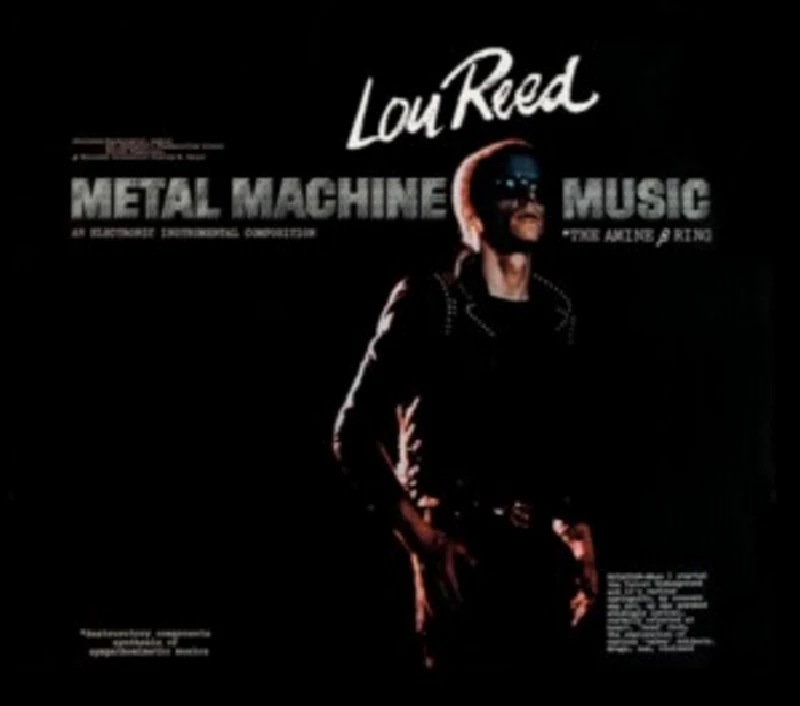
Label:
Select Label
Format: N/A
intro
In our 'Re:View' section, in which our writers look back on albums from the past, Jon Rogers reflects on Lou Reed's confrontational and critically panned, but heavily influential 'Metal Machine Music', which has just been reissued on Blue-Ray and DVD Audio
“The tubular groaning of a galactic refrigerator” is how James Wolcott in ‘Rolling Stone’ described Lou Reed’s then latest album ‘Metal Machine Music’ which had been released in July 1975. It was on first appearance a sprawling, impenetrable, double album of guitar noise and feedback lasting 61 minutes which seemed to some only worth putting on when you wanted to clear the room. Most listeners would probably agree with the ‘Rolling Stone Record Guide’ that it was an album of “nothing more than ear-wrecking electronic sludge”. But then, surely, an album considered by staid music journal ‘Q’ to be the fourth worst album of all time has got to have something going for it. 'Metal Machine Music' is certainly a great big breeze-block of sheer, undiluted cacophonous noise that is unrelenting and brutal and listening to it is unsettling. But forget all the pseudo-scientific and musicological mumbo-jumbo scattered about on the cover and liner notes waffling on about “dextrorotory components synthesis of sympathomimetic musics” and the such like. This is just rubbish and something of a red herring. Whilst holed up in his Upper East Side apartment – decorated with velvet and a zebra skin rug - with transsexual ‘Rachel’ he got two guitars, set them to unusual tunings, mucked about with the reverb levels and set them up against the amps – and recorded the lot on a four-track system. The resulting tapes were then edited and mastered at Sterling Sound by Reed. But there is a lot more going on there than simply a whole load of noise and distortion and feedback. There is something very captivating about it that draws anyone in who gives it more than a cursory listen that has an almost hypnotic effect. Like being transfixed by the flames of a fire you become captivated by the subtle changes of tempo and tones. Like the flames of the fire, it’s basically the same, but ever so slightly different and constantly changing and evolving. “That record [MMM] was the closest I’ve ever come to perfection,“ Reed said at time. “It’s the only record I know that attacks the listener [...] It’s impossible to even think when the thing is on. It destroys you. You can’t complete a thought. You can’t even comprehend what it’s doing to you. You’re literally driven to take the miserable thing off. You can’t control that record.” Almost a whole mythology has risen up around the album with various critics coming up with theories about it. Was it a great big ‘fuck you’ to the record label RCA who he was pissed off with? Was it some sort of glorious Gonzo-esque attempt at commercial suicide where Reed killed off his more commercially acceptable persona of his last studio album ‘Sally Can’t Dance’ like his friend David Bowie had done with Ziggy Stardust? Or was it just simply the result of an amphetamine-crazed mind after years of drug abuse? Or perhaps he was deadly serious, as interviews he did at the time would appear, and this was an album to elevate him to the position of ‘serious’ composer up there with the likes of La Monte Young, John Cage and Iannis Xenakis? This writer doesn’t really seem to mind what the motivation was for 'Metal Machine Music' and quite probably there is an element of truth in all the theories that have been speculated upon over the years. All that jargon stuff he waffled on about during interviews, throwing in classical music references and what appeared to be scientific jargon has later been shown to be rubbish and is no doubt Reed’s attempt to pull the wool over some hacks eyes and have a bit of a laugh at their expense. Included on the record’s jacket was a list of the equipment supposedly used in the recording, along with a bunch of some scientific-looking sympbols that Reed had copied out of a stereo magazine. But he later admitted in Victor Bockris’ biography: “I made up the equipment on the back of the album. It’s all bullshit.” He even told Lester Bangs that he had put in references to Beethoven’s ‘Eroica’ (3rd) and ‘Pastoral’ (6th) Symphonies. If Reed would be kind enough to point out where these are as I must be missing something. The germ for the idea, if Reed is to be believed, started years previously. Reed told Lenny Kaye in an 'NME' interview in January 1976 that the idea for something like 'Metal Machine Music' was sparked when his Velvet Underground collaborator John Cale was part of minimalist composer La Monte Young’s Theatre of Eternal Music (which also included Tony Conrad and Angus MacLise) and would be later developed with the tapes Cale and Reed would start to make when they first got together. But while 'Metal Machine Music' might sound to those raised purely on a diet of rock and pop music as coming way out of left field it is not that unique. The work of La Monte Young is clearly the biggest influence with his ground breaking work on repetitive drones and his rejection of Westernised notions of tonality and harmony but there are also overtones of the Greek-born composer Iannis Xenakis. And Reed had already dipped his toe in the water with early Velvet Underground songs like ‘Loop’ and ‘Heard Her Call Name’. With referencing these serious composers it has been speculated that Reed was trying to raise his profile away from the more frivolous end of pop music – such as his early music career writing pop songs to order at Pickwick – and his desire to be taken seriously rather than a pop star. ‘Sally Can’t Dance’ hadn’t done him any favours in that respect and had been a commercial success. What Reed wanted was to be seen as an auteur almost, not some throwaway pop writer. 'Metal Machine Music' was, to some minds, that calling card that said Reed the composer had arrived. Reed may have had aspirations to be taken seriously as an artist, with all the metaphorical beard stroking that that entails but at the time the boundaries of his normality were being eroded by copious amounts of amphetamine consumption, mainly Desoxyn. According to Bockris’ biography Reed and his drug circle focused around Ed Lister would regularly shoot up the equivalent of between 10 and 20 15mg pills at once, invariably keeping the group awake for days at a time, slowly causing bouts of paranoia and delusionary fears as well as affecting his physical health. One nameless executive at RCA is quoted by Bockris as saying at the time Reed had come in for meetings about 'Metal Machine Music': “As soon as he came walking into my office I could see this guy was not too well connected with reality. If he was a person walking in off the street with this shit ['Metal Machine Music'] I woulda threw him out. But I hadda handle him with kid gloves, because he was an artist in whom the company had a long-term commitment [...] I couldn’t tell him it was just a buncha shit. Jesus Christ, it was fuckin’ torture music.” Reed’s previous albums ‘Sally Can’t Dance’, and the live albums ‘Rock ‘n’ Roll Animal’ and ‘Lou Reed Live’ had all made money and in 1975 RCA had high hopes that their little money-maker would do the same again. But apparently after presenting the tapes to the record company Reed had to run to the toilet in order to burst out laughing. According to the marketing executive Frank O’Donnell who was present when 'Metal Machine Music' was played to the marketing and A&R team: “Everyone was looking at everyone else; people were saying, ‘What the hell is that?’ Somebody voiced that question and the answer came back, ‘That’s Lou Reed’s new album ‘Metal Machine Music’. His contract says we’ve got to put it out.” RCA had initially wanted to put the record out on their classical Red Seal label but Reed argued that that would be pretentious. Instead the label dressed up the double album in a similar manner to his live albums with the singer dressed in leather and shades and short, cropped hair as if this was going to be another heavy rock album similar to the likes of ‘Rock ‘n’ Roll Animal’. Any unsuspecting fan was going to be in for a surprise. According to Reed: “They were supposed to put out a disclaimer: ‘Warning – no vocals. Best cut: none. Sounds like: static on a car radio.” But didn’t. To promote the record Reed, was on particularly aggressive, combative form, giving no quarter but also lacing what he said with dry humour, often stating that he thought the record should be the soundtrack for that summer’s hit horror movie ‘The Texas Chainsaw Massacre’. He told one interviewer: “That album should have sold for £70.99. If they think that is a rip-off, yeah, and I’ll rip them off some more. I’m not gonna apologise to anybody. They should be grateful I put that fucking thing out, and if they don’t like it, they can go eat rat shit. I make records for me.” By the time he met up with Lenny Kaye in January 1976 he had calmed down a bit, telling the future Patti Smith guitarist: “I happen to love that album, I don t care what anybody says. It's fun... it also happens to be really good.” In the same interview he still backed the record: “it was a real Lou Reed record. No bullshitting around. You want heavy metal? You got off on ‘Rock 'n' Roll Animal’? Ok, shmuck, now we'll give some heavy metal.” But he was at pains to claim the record wasn’t a scam. By the end of the year though he was telling Caroline Coon in a 'Melody Maker' interview that the whole thing had been “commercial suicide” but it had been “calculated – on purpose with no 'if's' and 'but's”. And in some respects 'Metal Machine Music' had been a way for Reed to kill off his pop persona, just like Ziggy Stardust. He told 'Melody Maker': “Oh, I slept through ‘Sally Can't Dance’ – that's no big secret. They'd make a suggestion and I'd say 'oh, all right.' I'd do the vocals in one take, in twenty minutes, and then it was good-bye." "But the worse the albums were, the more they apparently sold. And I kept thinking that somehow it would stop. But it didn't. So I decided to put a stop to it. For those who wanted to hear the real thing, and wanted to hear a guitar solo, they got ‘Metal Machine Music’. And that put a stop to it.” So if it is true that the album was a big ‘fuck you’ to the record label then it was also a ‘fuck you’ to the fans and his attempt at commercial suicide. “I put out ‘Metal Machine Music’ to clear the air and get rid of all those fucking assholes who show up at the show and yell ‘Vicious’ and ‘Walk on the Wild Side’. It was a giant fuck you.” It was also a ‘fuck you’ to his then manager Dennis Katz who he was also trying to break with and the record certainly provoked him with Katz raising a loud voice against the release of the record. Not only was the record released but Reed also lay into Katz who he referred to as “that kike” just to make sure. Within weeks Katz was no longer his manager. The critics really didn’t like it either. Even John Rockwell, who had been a fan of Reed’s since ‘Berlin’, hated it and wrote in 'The New York Times': “One would like to see rock stars take the risk to stretch their art in ways that might jeopardise the affection of their fans. But one can’t help fearing that in this instance, Mr Reed may have gone farther than his audience will willingly follow.” Lester Bangs appreciated it though: "As classical music it adds nothing to a genre that may well be depleted. As rock 'n' roll it's interesting garage electronic rock 'n' roll. As a statement it's great, as a giant FUCK YOU it shows integrity—a sick, twisted, dunced-out, malevolent, perverted, psychopathic integrity, but integrity nevertheless." Bockris, in his biography, calls the record “the ultimate conceptual punk album and a progenitor of New York punk rock”. That might be rather over-stating the case certainly musically, but that ‘fuck you’ attitude certainly was present in punk. Musically though 'Metal Machine Music' had a lasting impact on industrial music, like Nine Inch Nails as well as more extreme acts like Throbbing Gristle and Die Krupps and particular on Merzbow. It certainly influenced a whole the whole of the short-lived No Wave scene centred around the downtown lofts of New York with the likes of James Chance and Sonic Youth, in particular guitarist Lee Ranaldo’s playing. The screech of 'Metal Machine Music' can also be heard in the free form jazz of John Zorn as well as the likes of post-rock groups like Earth as well as the repetitive drone of bands like Spacemen 3 and Wooden Shjips. And TV on the Radio have even sampled the record on their track ‘Let the Devil In’ on their album ‘Return to Cookie Mountain’. And where would My Bloody Valentine be without having heard the record? Or the early Jesus and Mary Chain records like ‘Upside Down’? The archive photograph that accompanies this article was taken by Mick Rock.
Track Listing:-
Picture Gallery:-

profiles |
|
1942 - 2013 (2013) |
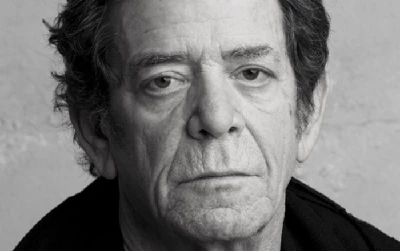
|
| Denzil Watson looks back on the career and life of Velvet underground front man and solo artist Lou Reed, who died at the age of 71 in October |
| A Personal Tribute (2013) |
| The Journalists and the Media (2013) |
| Lou Reed's Berlin (2008) |
| Lou Reed's Berlin (2008) |
live reviews |
|
Hammersmith Apollo, London, 1/7/2007 |

|
| Lou Reed has recently been touring Europe with his bleak early 1970's masterpiece, 'Berlin', and both a choir and brass and strings section. John Clarkson finds that it has lost none of and impact almost 35 years on from its original release and the New York rocker on fantastic form |
| Barbican, London, 28/5/2003 |
favourite album |
|
Rock 'n' Roll Animal (2010) |
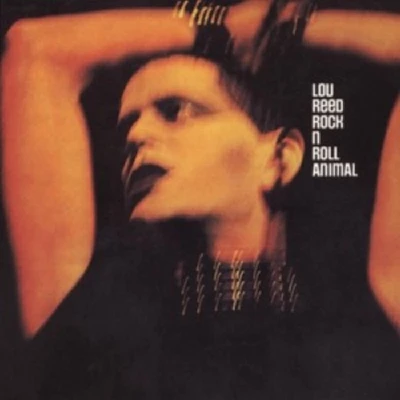
|
| Jeff Thiessen examines Lou Reed's classic 1974 live album, 'Rock 'n' Roll Animal' |
| The Blue Mask (2002) |
features |
|
Lou Reed (2013) |
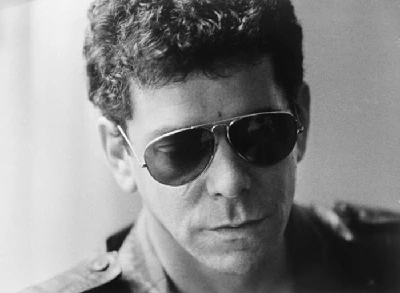
|
| John Clarkson writes of ten of his favourite songs in the solo career of the late Lou Reed |
| The Raven (2003) |
reviews |
|
Berlin : Live at St Ann's Warehouse (2008) |
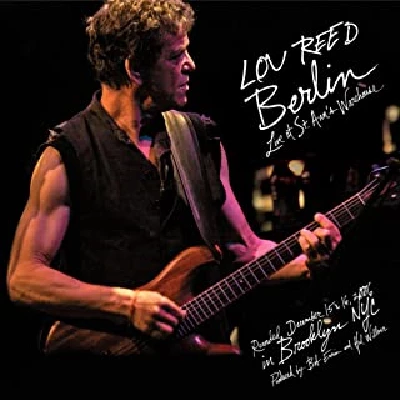
|
| Live reworking of Lou Reed's infamously controversial 'Berlin' album, which shows that Reed still has the power to enthral and shock |
| NYC Man The Ultimate Collection (2003) |
most viewed articles
current edition
Jack Frost - As Seen on TVIrvine Welsh - Interview
Cary Baker - Down on the Corner: Adventures in Busking and Street Music
Folk in a Field - Photoscapes 2
Nirvana - The Show Must Go On
Carl Ewens - David Bowie 1964 to 1982 On Track: Every Album, Every Song
Skunk Anansie - Old Market, Brighton, 16/5/2025
Idles - Bristol
Josie - Interview
John Newman - Love Me Again
most viewed reviews
current edition
Sick Man of Europe - The Sick Man of EuropeLiarbilitys - Vandalheart
Lucy Spraggan - Other Sides of the Moon
Bruce Dickinson - More Balls to Picasso
Wolf Alice - The Clearing
Billie Marten - Dog-Eared
Rupert Wates - Father to the Man
Kirk Adams and Ed Woltil - Eat The Sunshine, Drink The Starshine
Suzie Ungerleider - Among The Evergreens
Pulp - More
Pennyblackmusic Regular Contributors
Adrian Janes
Amanda J. Window
Andrew Twambley
Anthony Dhanendran
Benjamin Howarth
Cila Warncke
Daniel Cressey
Darren Aston
Dastardly
Dave Goodwin
Denzil Watson
Dominic B. Simpson
Eoghan Lyng
Fiona Hutchings
Harry Sherriff
Helen Tipping
Jamie Rowland
John Clarkson
Julie Cruickshank
Kimberly Bright
Lisa Torem
Maarten Schiethart